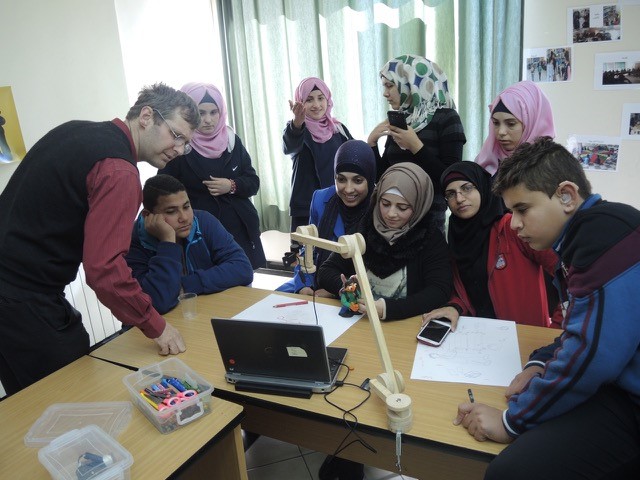
By Radwa Al Helou
PRCS allocates utmost attention to hearing-impaired persons who cannot communicate or express their feelings with words. This is reflected in the extracurricular activity organized by the Society’s Rehabilitation Department in cooperation with the British Council to help hearing-impaired persons interact with other people and express their feelings in new and effective ways.
Launched in 2013 with the participation of students from PRCS’ School for the Hearing-Impaired, this extracurricular activity teaches school graduates how to animate their drawings into cartoons. The ultimate goal is to train a group of graduates so they are capable of producing animated cartoons and of running workshops in schools for the hearing-impaired, with a special emphasis on integrating sign language in their work.
This activity is both educational and artistic. On the educational level, students start by discussing stories and exchanging views. They then create play-doh and cardboard models and learn how to move them manually as well as how to shoot and record this movement using cameras and computers, thus creating and exploring a world of their own. This confidence-building activity plays a major role in boosting their mental attitudes. It also helps them use their animated cartoons to communicate with other people under the supervision of skilled teachers.
On the artistic level, students’ creativity and engagement in their communities are promoted through the production of cartoons and the new skills they learn from their peers as well as through Open Days, summer activities and workshops about cartoon animations. Moreover, their attitudes and moods are boosted. Through drawing, painting, trying and mixing different colours, children imagine themselves as artists able to control and overcome their sorrow or despair and to find hope and inspiration through art.
According to Suheir Badarneh, Head of the Society’s Rehabilitation Department, “this activity helps foster creativity and self-expression in hearing-impaired children. It is true that they have very limited auditory abilities, but these children have a better visual-motor concentration and enjoy greater manual dexterity than their peers”.
Jan Caspers, a trainer from the British Council, said: “Creating animated cartoons is not a trick you learn overnight. It is a profession based on a set of skills that are developed with time. This activity enables hearing-impaired students to mould their ideas with their own hands, to observe and interact with the surrounding world and to create their own real worlds. I am happy with this partnership with the PRCS’ School and I hope that our cooperation will continue over the coming years. Our aim is to develop training programs in the field of animated cartoons in Palestine as part of a British Council initiative”.
This activity also aims at raising issues relating to persons with disabilities, especially hearing-impaired persons. It helps boost their creativity and sheds light on the professional difficulties they face and the constraints limiting their creativity.
End.